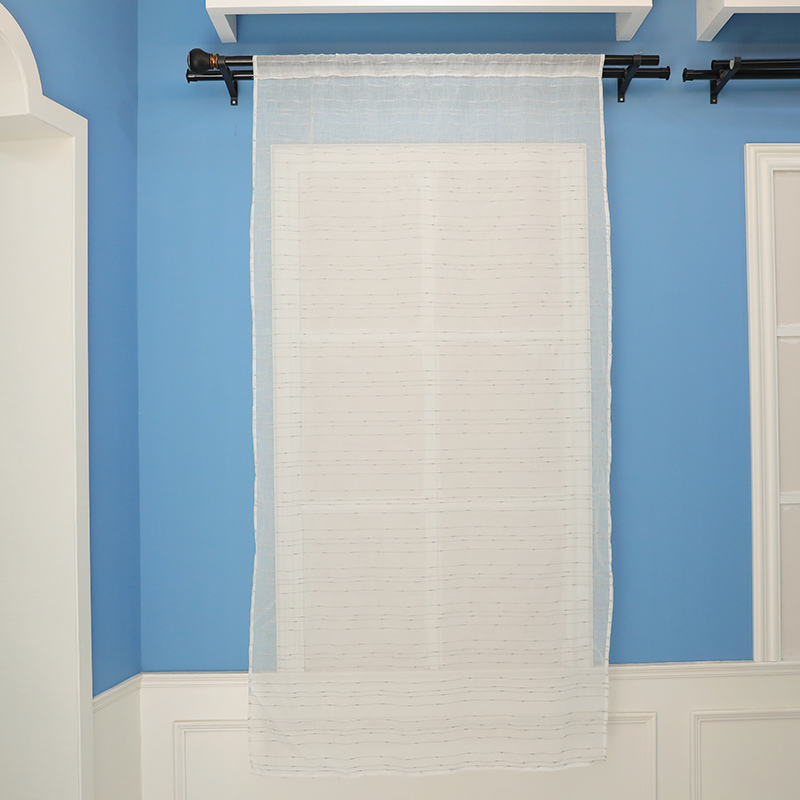How to prevent wrinkles or creases in my Christmas tablecloth after washing and storage?
Posted by Admin
Each tablecloth is made from specific materials (such as linen, cotton, polyester, or blends), and the care instructions on the label should be followed carefully. Fabrics such as linen or cotton may require more delicate care, while polyester or synthetic blends are often more wrinkle-resistant. By adhering to the recommended wash temperatures and handling methods, you minimize the risk of damage, shrinkage, or setting in unwanted creases.
When washing your Christmas tablecloth, ensure it is not overstuffed in the washing machine, as this can cause excessive friction and wrinkles. Allow the fabric enough room to move freely to maintain its shape. Wash the tablecloth using cold or lukewarm water to prevent fibers from shrinking or becoming misshapen. Opt for a gentle or delicate cycle, especially for natural fibers like linen or cotton, to protect the fabric from harsh agitation. If the fabric is prone to shrinking, consider hand washing or using a mesh laundry bag to offer additional protection.
Over-drying can be one of the primary causes of wrinkles, as it tends to set the fabric into stiff, permanent creases. To avoid this, remove your tablecloth from the dryer while it is still slightly damp. At this stage, the fabric is easier to smooth out, whether by hand or with an iron. If air-drying is preferred, hang the tablecloth immediately to dry on a clothesline or flat surface to prevent any unsightly wrinkles from forming. Drying the tablecloth in a tumble dryer on a low heat setting is also an option, but ensure it is removed promptly before it becomes completely dry to avoid heavy creases.
Even after following proper washing and drying procedures, some wrinkles may remain. Ironing or steaming the tablecloth can effectively remove any lingering creases. Ironing is ideal for fabrics like cotton or linen; however, be sure to adjust the iron's temperature to suit the fabric type—high heat for cotton or linen, and low heat for more delicate fabrics like polyester or silk. Iron the tablecloth while it is still slightly damp to achieve the best results. Alternatively, using a garment steamer is a gentler approach, as it allows you to smooth out wrinkles without direct contact with the fabric, thus reducing the risk of scorch marks or fabric damage. Steam can penetrate deeper into the fabric fibers, making it ideal for tablecloths with intricate textures or designs.
For tablecloths that are lightly creased or if you need a quick solution, wrinkle-release sprays can be a convenient option. These sprays work by relaxing the fabric fibers, allowing you to gently tug on the tablecloth to release creases without the need for ironing. Simply spray a light mist across the surface of the tablecloth, then smooth out the wrinkles by hand or hang the fabric to dry. This method is particularly useful for tablecloths made from synthetic fabrics like polyester or for those who want to avoid the time-consuming process of ironing.
Avoid folding the tablecloth in tight, sharp folds, as these can create deep wrinkles over time. Instead, fold it along the fabric's natural lines or roll it loosely to minimize pressure points. Rolling the tablecloth is particularly useful for larger sizes, as it helps reduce the formation of creases that can occur with tight folding. If the tablecloth features embroidery or intricate designs, consider rolling it with tissue paper or placing a layer of protective fabric between folds to ensure the designs are not damaged during storage.


 English
English Español
Español













